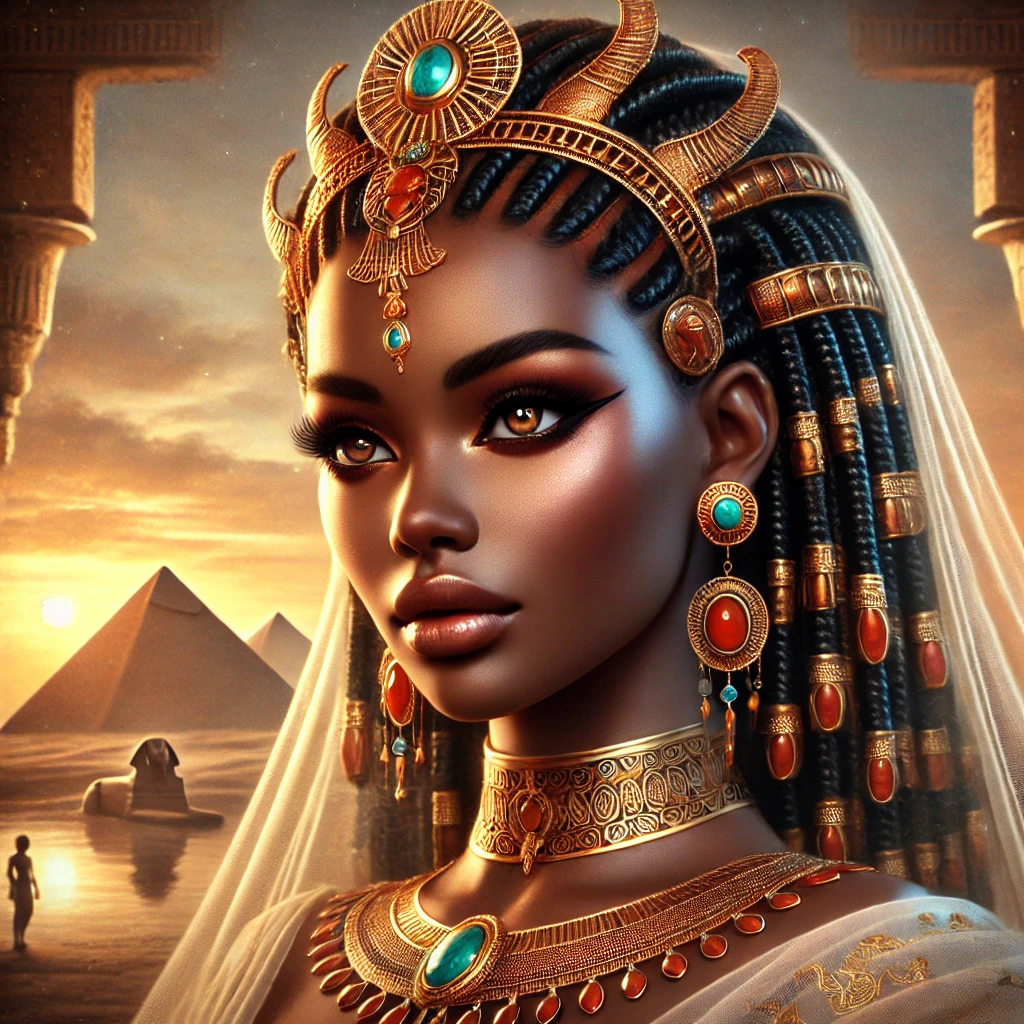
1. Isis (Aset)
Timeline: Old Kingdom (c. 2686 BCE) to Roman Period (395 CE).
Known For: Goddess of magic, healing, and motherhood.
Role: Central figure in the myth of Osiris, where she resurrects him to conceive Horus. Seen
as the ideal mother and healer.
Symbols: Throne headdress, wings of protection.
Cultural Significance: Her worship spread beyond Egypt, influencing cultures around the
Mediterranean.
Introduction
For over three millennia, the civilization of Kemet—known today as Ancient Egypt—stood as a
beacon of spirituality, art, and knowledge. At the heart of this rich and complex culture was an
unparalleled reverence for the divine feminine. The goddesses of Kemet embodied every aspect of
life, from creation and protection to wisdom, healing, and even destruction. These goddesses were
not mere mythical figures; they represented cosmic forces, natural elements, and human virtues,
providing spiritual guidance to the people of Kemet and shaping their understanding of the
universe.
In Kemet, the feminine was sacred, powerful, and essential to the balance of life. Goddesses were
seen as creators of the cosmos, protectors of the pharaoh, and nurturers of humanity. Their temples
stood as monuments of devotion, their rituals infused with deep spiritual meaning, and their
symbols etched into the very fabric of Egyptian life.
Among these revered figures, Isis (Aset), the goddess of magic and motherhood, stands as one of
the most beloved. Her story is a tale of love, resilience, and divine power, woven deeply into the
spiritual fabric of Kemet.
The Story of Isis: A Goddess of Love and Magic
The tale begins with the tragic death of Osiris, her beloved husband, at the hands of his jealous
brother, Set. Set, consumed by envy and ambition, murdered Osiris and scattered his body parts
across the land. Heartbroken but determined, Isis set out on a quest to find and reunite the fragments
of her husband’s body. Her journey was arduous, marked by devotion and her extraordinary magical
abilities.
Through her perseverance, Isis collected the pieces of Osiris and, with the help of her sister
Nephthys, used her powerful magic to resurrect him temporarily. In this moment of divine union,
she conceived their son, Horus, who would grow to avenge his father and restore balance to the
land. Osiris, transformed by his death and resurrection, became the god of the afterlife, guiding
souls into the realm of eternity.
Isis’s unwavering love, her magical prowess, and her role as the protector of her son, Horus, made
her a symbol of motherhood and devotion. Her story inspired countless rituals, and she became one
of the most widely worshiped deities in Kemet and beyond.
The Appearance of Isis: A Vision of Divine African Beauty
Isis is depicted with the regal, unmistakable features of African beauty, embodying the people of
Kemet and their divine connection to their land. Her skin is a rich, deep brown, glowing with a
radiant, life-giving warmth that reflects her role as the nurturer of humanity. Her full lips, delicately
curved, are a symbol of compassion and wisdom. Her high cheekbones and almond-shaped eyes
exude an air of regal authority and spiritual insight.
Her tightly coiled hair is often braided or adorned with intricate designs, reflecting both the
aesthetics and traditions of African culture. She wears an elegant crown shaped like a throne,
symbolizing her role as the mother of kings and the divine ruler of the heavens. In later depictions,
her headdress includes a sun disk encircled by cow horns, connecting her to celestial and nurturing
forces.
7 of 98
Her body is portrayed with strength and grace, adorned in a flowing linen sheath dress that
accentuates her divine femininity. The fabric, often depicted in shimmering white or gold,
represents purity and the light of the gods. Her jewelry—crafted of gold, lapis lazuli, carnelian, and
turquoise—emphasizes her connection to the Earth, the heavens, and the Nile’s life-giving waters.
In her hands, Isis holds sacred symbols: the ankh, representing eternal life, and the sistrum, a
musical instrument used in rituals to invoke harmony and divine favor. These objects are both tools
of her magic and emblems of her eternal influence.
Why Isis Resonates Today
The story of Isis transcends time and geography, embodying qualities that remain deeply relevant:
love, resilience, and transformation. Her devotion to restoring balance and protecting her loved ones
inspires us to face challenges with strength and determination. Her wisdom and connection to magic
remind us of the power within to create change and nurture growth.
As a goddess with African features, Isis stands as a powerful symbol of identity, pride, and cultural
heritage. Her imagery, rooted in the beauty of the people of Kemet, serves as a reminder of the
civilization’s profound contributions to human history and spirituality. She continues to inspire not
only as a mother figure but also as a representation of the divine feminine power that exists within
us all.